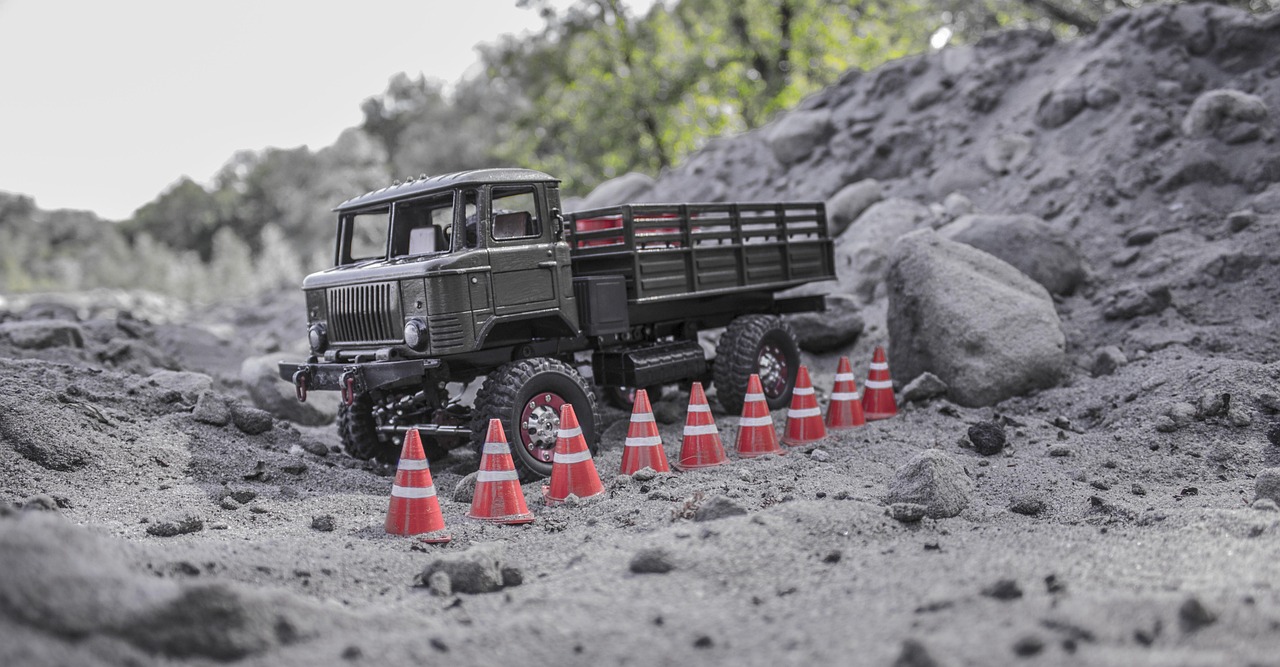This article serves as a comprehensive guide on how to enhance the performance of your belt-driven Redcat RC car. From making precise adjustments to regular maintenance and tuning tips, we aim to provide you with all the necessary information for an improved racing experience.
Understanding Belt-Driven Systems
Belt-driven systems are integral to the functionality of RC cars, as they facilitate the transfer of power from the motor to the wheels. Understanding the mechanics behind these systems can significantly aid in optimizing performance. The belts must be in good condition, free from wear and tear, and properly tensioned to ensure efficient power delivery. Familiarizing yourself with how these systems operate will help you troubleshoot any issues that may arise.
Tools Needed for Adjustment
Before you dive into adjustments, it’s crucial to gather the right tools. Having the appropriate equipment not only makes the process smoother but also ensures better results. Essential tools include:
- Hex wrenches
- Torque wrench
- Calipers
- Lubricants
- Cleaning supplies
Investing in high-quality tools can make a significant difference in the precision of your adjustments.
Checking the Belt Tension
Correct belt tension is vital for optimal performance. If the belt is too tight, it can lead to excessive wear on components, while a loose belt may cause slippage and reduced speed. To check the tension, apply a gentle pressure to the belt; it should have a slight give but not feel overly loose. Adjusting the tension can be done by loosening or tightening the motor mount screws.
Signs of Incorrect Belt Tension
Recognizing the symptoms of improper belt tension is essential. Common signs include:
- Unusual noise during operation
- Inconsistent acceleration
- Visible wear on the belt
Addressing these issues promptly can save you from further complications down the line.
How to Adjust Belt Tension
To achieve the optimal belt tension, follow these steps:
1. Loosen the screws on the motor mount.2. Adjust the motor position to either tighten or loosen the belt.3. Re-tighten the screws while ensuring the belt maintains proper tension.4. Test the car to ensure smooth operation.
Lubrication for Smooth Operation
Proper lubrication is critical for the longevity and efficiency of your RC car’s components. Regularly applying the right lubricants can significantly enhance performance. Ensure that you use lubricants specifically designed for RC cars, as these will provide the best protection and performance.
Choosing the Right Lubricant
Different lubricants serve various purposes. For belt-driven systems, consider using silicone-based lubricants for belts and gears. These lubricants reduce friction and wear, allowing for smoother operation. Always consult your user manual for recommended products.
Lubrication Techniques
Applying lubricant correctly is essential. Here are some effective techniques:
- Use a small brush to apply lubricant evenly to the belt and gears.
- Wipe off excess to prevent dirt accumulation.
- Regularly check and reapply lubricant based on usage frequency.
Adjusting Gear Ratios for Speed
Gear ratios play a significant role in determining the speed and torque of your RC car. Adjusting these ratios can help you find the right balance for your racing style and track conditions. A lower gear ratio typically offers higher speed, while a higher ratio provides better torque.
Understanding Gear Ratio Basics
Before making adjustments, it’s vital to understand how gear ratios function. The ratio is determined by the number of teeth on the pinion gear compared to the number of teeth on the spur gear. This understanding will guide you in making informed decisions about adjustments.
Steps to Change Gear Ratios
To change gear ratios, follow these steps:
1. Remove the gear cover.2. Replace the pinion gear with one that has a different tooth count.3. Reassemble the gear cover and test the car.
Tuning Suspension for Better Handling
Proper suspension tuning is essential for improving handling and stability. Adjusting suspension settings based on track conditions can significantly enhance your control over the vehicle.
Importance of Suspension Tuning
Suspension tuning affects overall performance. Adjustments should be made based on the type of terrain you are racing on. A stiffer suspension may be beneficial for smooth surfaces, while a softer setup can help absorb bumps on rough terrain.
Adjusting Shock Absorbers
Shock absorbers are key components in your suspension system. To adjust them:
- Change the oil viscosity for different damping characteristics.
- Adjust the preload settings to modify ride height.
Testing Performance After Adjustments
After making adjustments, it’s crucial to test your RC car to evaluate performance changes. Conducting effective tests can help you confirm if the modifications have had the desired effect.
Setting Up a Test Track
Creating a test track allows for controlled performance evaluation. Choose a location that mimics the conditions of your usual racing environment to get accurate results.
Analyzing Test Results
Analyzing performance data is essential for understanding the impact of your adjustments. Focus on metrics such as speed, acceleration, and handling to determine if further tuning is necessary.

Understanding Belt-Driven Systems
Belt-driven systems are integral to the operation of RC cars, particularly in models like the Redcat series. These systems facilitate the transfer of power from the motor to the wheels, allowing for efficient motion and control. Understanding the mechanics behind these systems can significantly enhance your ability to optimize performance and troubleshoot any issues that may arise.
At the heart of a belt-driven system is the belt itself, which connects the motor’s drive gear to the driven gear attached to the wheels. This connection is crucial as it translates the motor’s rotational force into movement. A well-maintained belt ensures smooth operation, while a worn or improperly tensioned belt can lead to slippage, reduced speed, and compromised handling.
- Power Transmission: The belt serves as a link between the motor and the wheels, transferring power efficiently.
- Torque Management: Proper belt tension is essential for managing torque, which affects acceleration and overall speed.
- Durability: Understanding the materials used in belts can help in selecting the right type for your RC car, impacting longevity and performance.
To ensure optimal performance, it’s essential to regularly inspect the belt for signs of wear and tear. Look for cracks, fraying, or any signs of excessive stretching. If the belt appears damaged, it’s crucial to replace it promptly to avoid further complications.
Another critical aspect of belt-driven systems is tension adjustment. Incorrect tension can lead to a myriad of issues, including loss of power and increased wear on components. A belt that is too tight can cause strain on the motor, while one that is too loose can slip, leading to inefficient power transfer. Regularly checking and adjusting the tension can make a significant difference in performance.
In addition to tension, lubrication plays a vital role in the health of the belt-driven system. Applying the right lubricant can reduce friction and wear, ensuring that the belt operates smoothly. It’s recommended to use lubricants specifically designed for RC car components, as they can withstand the unique stresses these systems endure.
In summary, understanding the mechanics of belt-driven systems in RC cars is fundamental for any enthusiast. By maintaining the belt, ensuring proper tension, and applying suitable lubrication, you can significantly enhance the performance and longevity of your vehicle. This knowledge not only helps in optimizing your car’s capabilities but also equips you with the skills to troubleshoot and address potential issues effectively.
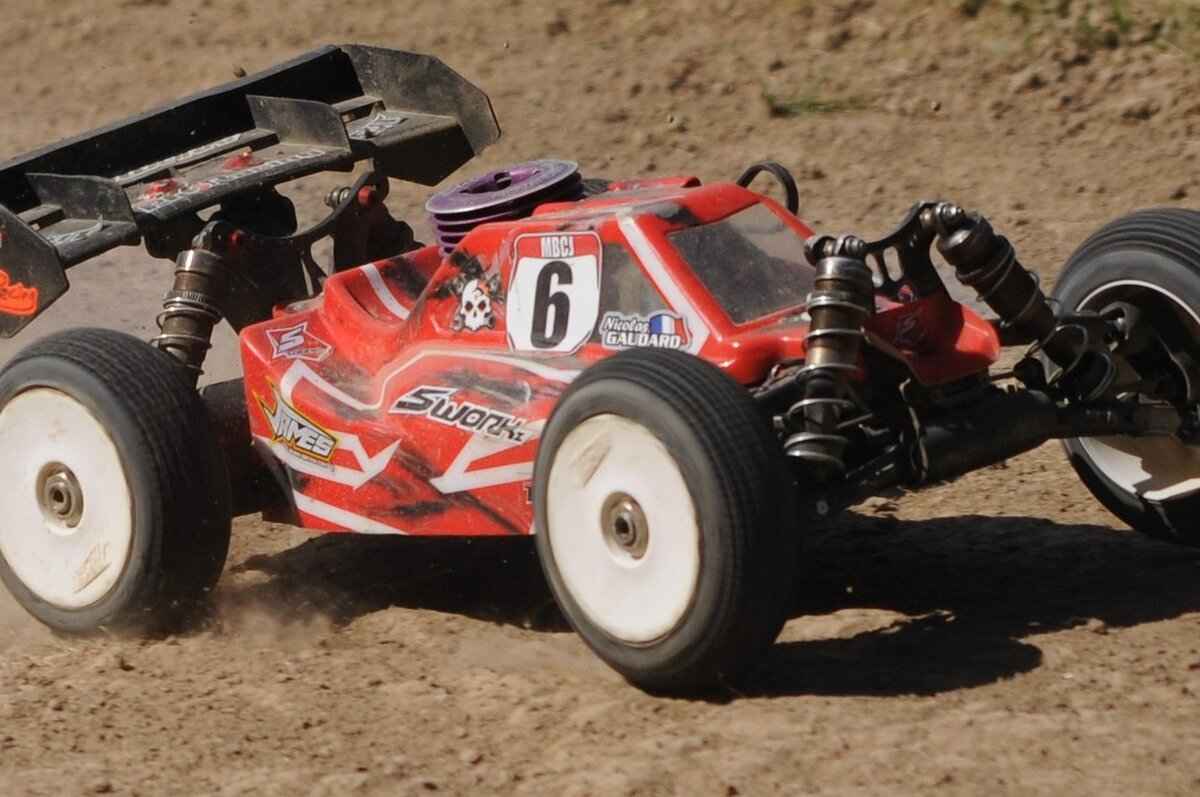
Tools Needed for Adjustment
When it comes to tuning your Redcat RC car, having the right tools is essential for achieving optimal performance. The process of adjustment can be intricate, and using the appropriate equipment not only streamlines the procedure but also enhances the overall results. In this section, we will delve into the , ensuring you are well-prepared for the task ahead.
- Hex Wrenches: These are crucial for loosening and tightening screws on your RC car. A set of metric hex wrenches will allow you to adjust various components with precision.
- Screwdrivers: A variety of screwdrivers, including Phillips and flat-head, are necessary for accessing different parts of your car. Ensure they are of good quality to avoid stripping screws.
- Calipers: For accurate measurements, calipers are invaluable. They help you measure belt tension, gear spacing, and other critical dimensions.
- Torque Wrench: This tool ensures that you apply the correct amount of torque to screws and nuts, preventing damage to components due to over-tightening.
- Lubricants: High-quality lubricants are essential for maintaining smooth operation of moving parts. Choose lubricants specifically designed for RC vehicles to ensure compatibility.
- Cleaning Supplies: Keeping your RC car clean is vital for performance. Have brushes, cloths, and cleaning solutions on hand to remove dirt and debris.
- Battery Charger: A reliable battery charger is necessary for keeping your car powered up. Consider a smart charger that can manage different battery types effectively.
- Setup Station: A setup station will help you make precise adjustments to your car’s suspension and alignment. This tool is particularly useful for tuning your vehicle for different track conditions.
Having these tools readily available can make a significant difference in your tuning experience. Each tool serves a specific purpose, and understanding their functions will empower you to make informed adjustments. Whether you are checking the belt tension, adjusting gear ratios, or tuning the suspension, the right equipment will facilitate a smoother process and lead to better performance outcomes.
Before diving into adjustments, take a moment to organize your workspace. A clean and orderly environment not only enhances efficiency but also reduces the risk of losing small parts or tools. Additionally, familiarize yourself with each tool’s operation to maximize their potential during the tuning process.
In summary, equipping yourself with the right tools is a foundational step in optimizing your Redcat RC car’s performance. By investing in quality equipment and understanding its application, you set the stage for a successful tuning experience that can elevate your racing game.
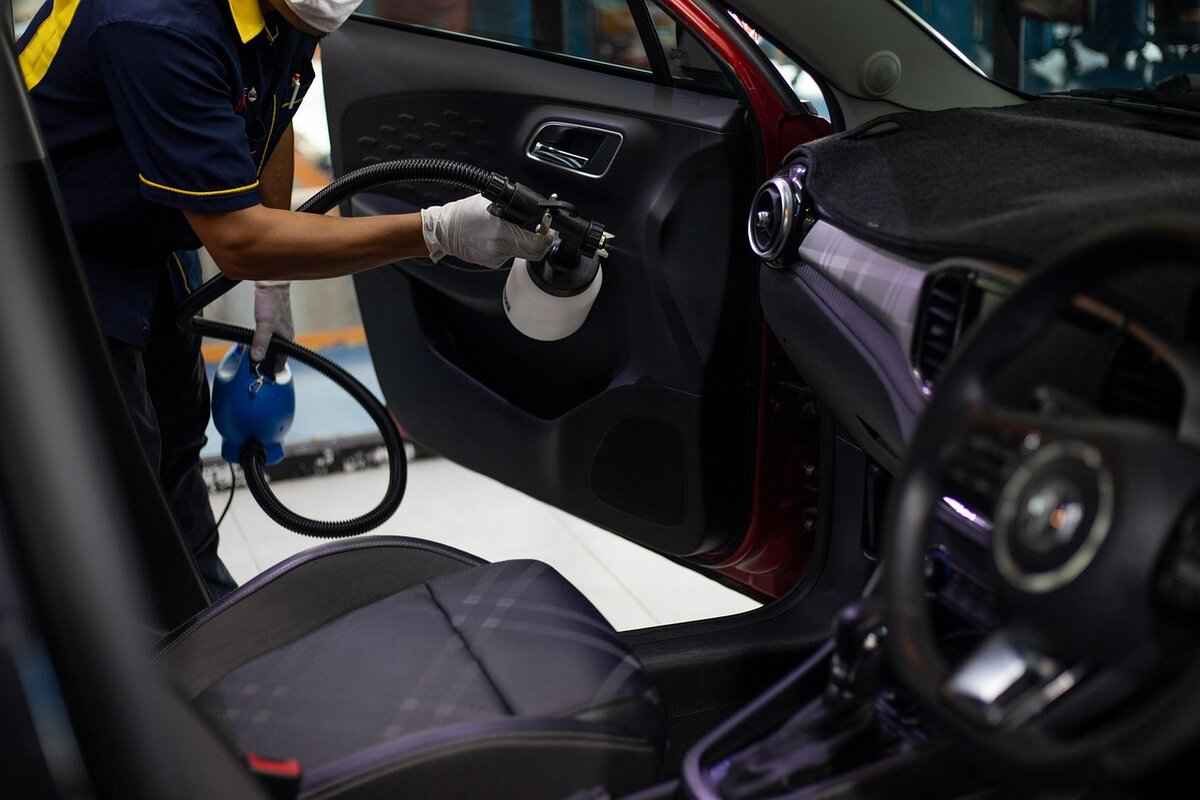
Checking the Belt Tension
Belt tension is a critical aspect of maintaining the performance of your belt-driven Redcat RC car. Incorrect tension can lead to a myriad of issues, including slippage, excessive wear, and ultimately, a decline in speed and handling. Therefore, understanding how to check and adjust belt tension is essential for any serious RC car enthusiast.
To begin with, it is important to recognize the signs of incorrect belt tension. A belt that is too loose may produce a noticeable slippage, especially during acceleration, resulting in poor power transfer from the motor to the wheels. Conversely, a belt that is too tight can cause excessive strain on the motor and other components, leading to premature wear and potential failure. Regularly checking the tension can help prevent these issues and ensure optimal performance.
- Visual Inspection: Start by visually inspecting the belt for any signs of wear or damage. Look for fraying, cracks, or discoloration, which may indicate that the belt needs replacement.
- Flex Test: Gently press down on the belt in the middle of its span. The belt should have a slight give, typically around 1/4 inch. If it feels overly tight or loose, adjustments are necessary.
- Listen for Noise: Pay attention to any unusual sounds while the car is running. A squeaking or grinding noise can be a sign of improper belt tension.
Once you have assessed the tension, the next step is to adjust it properly. Here’s a simple guide to help you through the process:
- Gather Tools: Ensure you have the necessary tools, such as a wrench and screwdriver, to make the adjustments.
- Locate the Adjustment Mechanism: Refer to your Redcat RC car’s manual to find the belt tension adjustment points.
- Make Adjustments: Loosen the bolts slightly, adjust the tension by moving the motor or adjusting the tensioner, and then retighten the bolts.
- Recheck Tension: After making adjustments, repeat the flex test to ensure the tension is now within the correct range.
In conclusion, maintaining the right belt tension is vital for the performance of your belt-driven Redcat RC car. Regular checks and adjustments can significantly enhance speed, handling, and overall longevity of your vehicle. By following the steps outlined above, you can ensure that your car remains in top condition, ready for any racing challenge.
Signs of Incorrect Belt Tension
Identifying symptoms of improper belt tension is crucial for maintaining the optimal performance of your belt-driven Redcat RC car. Both **over-tensioning** and **under-tensioning** can lead to various performance issues that may hinder your racing experience. Below are some key signs to look for that indicate whether your belt is too tight or too loose.
- Excessive Noise: If you hear unusual sounds, such as grinding or squeaking, while your RC car is in motion, this could indicate that the belt is either too tight or too loose. A properly tensioned belt should operate quietly.
- Belt Slippage: If the belt slips during operation, it is a clear sign that the tension is insufficient. This slippage can lead to a loss of power and reduced speed, affecting your overall performance.
- Inconsistent Acceleration: If your car struggles to accelerate smoothly or experiences sudden bursts of speed, this may be due to incorrect belt tension. A properly adjusted belt ensures consistent power delivery.
- Wear and Tear: Inspect your belt for signs of wear, such as fraying or cracking. Overly tight belts can cause excessive wear on both the belt and the pulleys, leading to premature failure.
- Heat Generation: An overly tight belt can generate excessive heat, which may cause damage to the belt and the motor. If you notice your car overheating, check the tension.
- Difficulty Steering: Improper belt tension can also affect the steering responsiveness of your RC car. If you find it hard to control your vehicle, it may be time to check the belt tension.
- Visual Inspection: Regularly inspect the belt for any visible signs of damage or misalignment. A misaligned belt can lead to uneven tension distribution, causing performance issues.
To ensure your belt-driven Redcat RC car performs at its best, it’s essential to regularly check the belt tension and make necessary adjustments. Keeping an eye on these signs can help you avoid performance issues and extend the life of your vehicle’s components. Remember, a well-maintained belt system is key to achieving peak performance in your racing endeavors.
How to Adjust Belt Tension
Adjusting the belt tension on your belt-driven Redcat RC car is a critical step in ensuring optimal performance. The right tension not only enhances speed but also improves handling and extends the lifespan of your components. This guide provides a detailed approach to achieving the perfect belt tension, ensuring your car runs smoothly and efficiently.
The belt tension directly affects the power transfer from the motor to the wheels. If the belt is too tight, it can lead to excessive wear on the motor and drivetrain components. Conversely, if the belt is too loose, it may slip, resulting in a loss of power and control. Thus, maintaining the correct tension is essential for maximizing performance and reliability.
- Torque Wrench: To ensure accurate tightening of bolts.
- Calipers: For measuring the belt’s tension accurately.
- Hex Wrenches: To access and adjust the belt tensioning mechanism.
- Lubricant: To apply on the belt for smoother operation.
Before making adjustments, it is crucial to check the current tension of the belt. Here’s how:
1. **Visual Inspection:** Look for signs of wear or fraying on the belt.2. **Tension Measurement:** Use calipers or a tension gauge to measure the belt's current tension.3. **Check for Slippage:** Run the car briefly to see if the belt slips under load.
Once you have assessed the current tension, follow these steps to make adjustments:
- Loosen the Tensioning Bolts: Use a hex wrench to gently loosen the bolts securing the belt tensioner.
- Adjust the Tension: Depending on your measurement, pull the tensioner to increase or decrease the tension on the belt.
- Re-tighten the Bolts: Once the desired tension is achieved, securely tighten the tensioning bolts with a torque wrench.
- Re-check Tension: After tightening, double-check the tension with your calipers to ensure it’s within the recommended range.
Recognizing the signs of improper belt tension can save you from future headaches. Here are some indicators:
- Excessive Noise: A noisy belt may indicate it is too tight or misaligned.
- Slipping: If you notice a loss of power during acceleration, the belt may be too loose.
- Wear Patterns: Uneven wear on the belt can suggest incorrect tension.
Adjusting the belt tension on your Redcat RC car is a straightforward process that can significantly enhance your vehicle’s performance. By following the steps outlined above, you can ensure that your belt is neither too tight nor too loose, ultimately leading to a smoother and faster racing experience. Regular maintenance and adjustments will keep your car in top shape, ready for any challenge that comes your way.
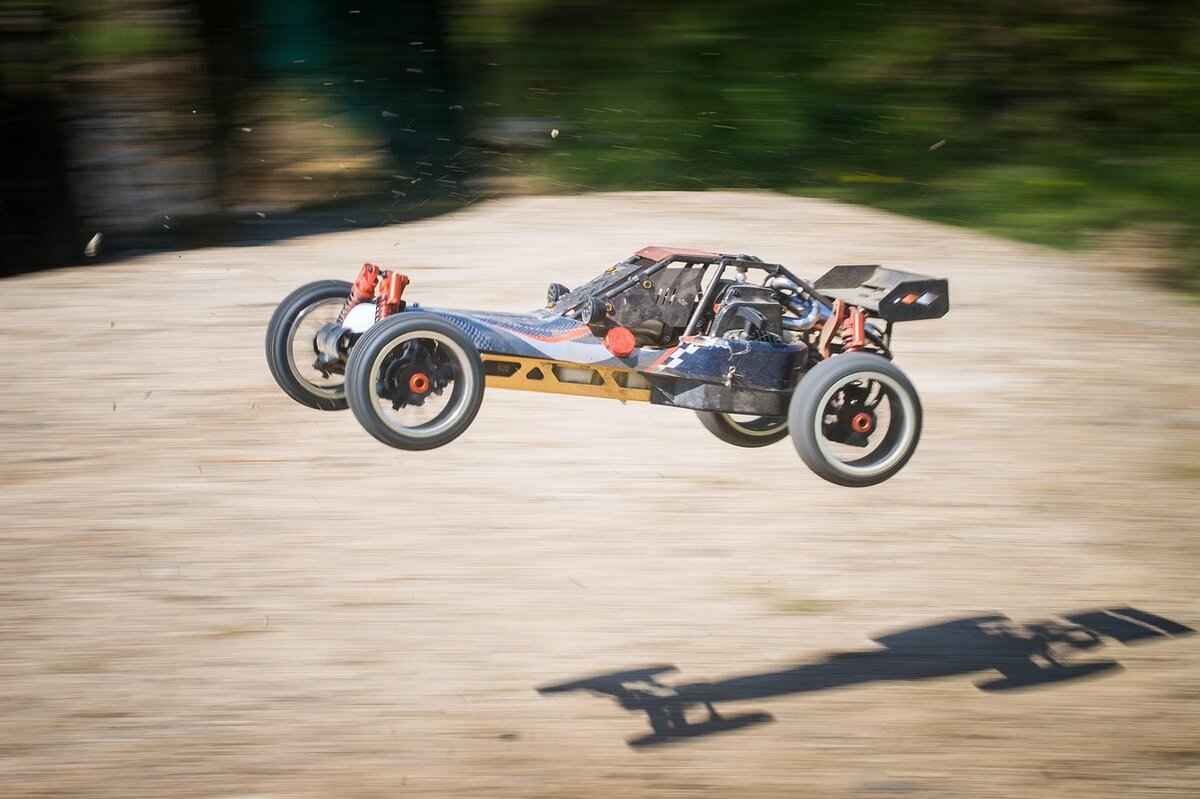
Lubrication for Smooth Operation
Proper lubrication is essential for ensuring the longevity and efficiency of your RC car’s components. Without adequate lubrication, the moving parts can experience increased friction, leading to wear and tear that can ultimately compromise performance. In this section, we will explore the types of lubricants suitable for your belt-driven Redcat RC car and provide guidance on how often to apply them for optimal results.
Lubrication plays a vital role in reducing friction between moving parts, which helps to prevent overheating and excessive wear. When components are well-lubricated, they operate more smoothly, enhancing overall performance. Moreover, regular lubrication can prevent rust and corrosion, extending the lifespan of your RC car.
Different lubricants serve different purposes, and selecting the right one is crucial for the performance of your RC car. Here are some common types of lubricants:
- Grease: Ideal for gears and other components that require a thicker lubricant to stay in place.
- Oil: Best for high-speed moving parts, as it reduces friction without adding excess weight.
- Graphite Powder: Useful for areas that are hard to reach with liquid lubricants, providing a dry lubrication option.
The frequency of lubrication depends on several factors, including how often you use your RC car and the conditions in which you drive it. Here are some general guidelines:
- After every few races: If you race frequently, a quick inspection and lubrication of key components after every few races can keep your car in top shape.
- Every month: For casual users, a monthly lubrication routine is recommended to maintain optimal performance.
- After exposure to harsh conditions: If your car has been driven in wet or dusty environments, it’s essential to lubricate more frequently to combat potential damage.
Applying lubricant correctly is key to ensuring your RC car operates smoothly. Here are some effective techniques:
- Clean the Components: Before applying any lubricant, ensure that the surfaces are clean and free from dirt and debris.
- Use the Right Amount: Apply a small amount of lubricant to avoid excess that can attract dirt and grime.
- Distribute Evenly: Move the parts manually after applying lubricant to ensure an even distribution across all surfaces.
In summary, proper lubrication is critical for maintaining the performance and longevity of your belt-driven Redcat RC car. By choosing the right lubricants, applying them at appropriate intervals, and using effective techniques, you can ensure that your RC car runs smoothly and efficiently. Regular maintenance not only enhances performance but also prolongs the life of your vehicle, allowing you to enjoy your racing experience to the fullest.
Choosing the Right Lubricant
When it comes to maintaining the performance of your belt-driven Redcat RC car, choosing the right lubricant is crucial. The effectiveness of your car’s components largely depends on the type of lubricant used. This section will explore the various types of lubricants suitable for belt-driven systems, their specific purposes, and how to select the best one for your needs.
Lubricants can be classified into several categories based on their composition and intended use. Here are the main types:
- Oil-Based Lubricants: These are commonly used for their ability to reduce friction and wear. They come in various viscosities and can penetrate tight spaces effectively.
- Grease: Grease is thicker than oil and is ideal for long-lasting lubrication. It stays in place and is excellent for components that undergo heavy loads.
- Dry Lubricants: These lubricants, often made from Teflon or graphite, are excellent for reducing friction without attracting dust or dirt. They are particularly useful in environments where cleanliness is paramount.
- Silicone Lubricants: Silicone-based lubricants are versatile and can be used on rubber, plastic, and metal. They provide a protective layer and are water-resistant.
Selecting the right lubricant involves considering several factors:
- Operating Conditions: Assess the environment in which your RC car operates. High temperatures may require a lubricant with a higher thermal stability.
- Material Compatibility: Ensure that the lubricant is compatible with the materials used in your RC car. Some lubricants can degrade plastics or rubber components.
- Performance Requirements: Consider the specific performance needs of your car. For example, if you need a lubricant that can withstand heavy loads, grease might be your best option.
Applying lubricant correctly is just as important as choosing the right type. Here are some effective techniques:
- Clean the Components: Before applying lubricant, ensure that all surfaces are clean and free from dirt or old lubricant residue.
- Apply Sparingly: A little goes a long way. Over-lubrication can attract dirt and cause more harm than good.
- Use the Right Tools: Use applicators like brushes or syringes for precise application, especially in tight areas.
When lubricating your belt-driven system, avoid these common pitfalls:
- Ignoring Manufacturer Recommendations: Always refer to the manufacturer’s guidelines for the best lubricant type and application method.
- Neglecting Regular Maintenance: Regularly check and maintain lubrication to prevent wear and tear on components.
- Using Incompatible Products: Avoid mixing different types of lubricants as this can lead to chemical reactions that may damage your RC car.
In summary, selecting the right lubricant for your belt-driven Redcat RC car is essential for optimal performance and longevity. By understanding the different types of lubricants available, considering the specific requirements of your car, and applying the lubricant correctly, you can ensure that your RC car operates smoothly and efficiently.
Lubrication Techniques
Proper lubrication is essential for the smooth operation of your Redcat RC car. It not only enhances performance but also prolongs the life of critical components. Understanding effective lubrication techniques can significantly impact your car’s operation, ensuring it runs at peak efficiency.
When it comes to lubricating your RC car, the key is to apply the right lubricant in the right places. Here are some effective techniques to consider:
- Identify Lubrication Points: Before applying any lubricant, it’s crucial to identify the key areas that require lubrication. Common points include the drive belt, gears, and any moving joints. Regularly inspecting these areas can help you determine when lubrication is necessary.
- Choose the Right Lubricant: Not all lubricants are created equal. For your belt-driven Redcat RC car, it’s essential to choose a lubricant that is specifically designed for high-performance models. Silicone-based lubricants are often suitable for belts, while grease may be more appropriate for gears. Always check the manufacturer’s recommendations.
- Clean the Components: Before applying lubricant, ensure that the components are clean. Dirt and debris can cause wear and tear, negating the benefits of lubrication. Use a soft cloth or brush to remove any grime from the moving parts.
- Apply Sparingly: When applying lubricant, less is often more. Over-lubricating can attract dirt and lead to slippage. Use a dropper or applicator to apply a small amount of lubricant directly to the necessary parts. Make sure it penetrates well without creating excess buildup.
- Rotate and Test: After lubrication, manually rotate the moving parts to distribute the lubricant evenly. This ensures that every component is adequately coated. Afterward, perform a test run to check for smooth operation and listen for any unusual noises that may indicate insufficient lubrication.
- Regular Maintenance: Establish a regular maintenance schedule for lubricating your RC car. Depending on usage, you may need to lubricate every few runs or after racing in dusty conditions. Keeping a maintenance log can help track when each part was last serviced.
By following these lubrication techniques, you can enhance the performance of your Redcat RC car and ensure its longevity. Remember that regular maintenance is key to keeping your vehicle in top shape, allowing you to enjoy a smoother and more efficient racing experience.

Adjusting Gear Ratios for Speed
is a critical aspect of optimizing the performance of your RC car. Gear ratios directly influence both speed and torque, making it essential to understand how to adjust them to suit your racing style and track conditions. By carefully selecting the right gear ratios, you can enhance acceleration, top speed, and overall handling, giving you a competitive edge on the track.
To begin with, it’s important to grasp the fundamentals of gear ratios. A gear ratio is defined as the ratio of the number of teeth on two gears that are meshed together. In the context of RC cars, this means that a higher gear ratio will generally lead to increased torque but reduced speed, while a lower gear ratio will yield higher speeds at the expense of torque. This balance is crucial for achieving optimal performance.
When considering adjustments, you should ask yourself: What type of racing do I participate in? If you’re racing on a track that requires quick acceleration and tight turns, a lower gear ratio might be beneficial. Conversely, for long, straight tracks where top speed is paramount, a higher gear ratio could be more advantageous.
Steps to Change Gear Ratios involve a few key actions:
- Identify Current Gear Setup: Before making any changes, document your current gear ratio setup. This will help you track the effects of your adjustments.
- Choose New Gears: Select gears with the appropriate number of teeth. For example, if you want to increase your top speed, consider using a smaller pinion gear or a larger spur gear.
- Disassemble the Gearbox: Carefully take apart your RC car’s gearbox to access the gears. Make sure to follow the manufacturer’s guidelines for disassembly.
- Install New Gears: Replace the old gears with your new selections, ensuring they are properly aligned and secured.
- Reassemble and Test: Once everything is back in place, reassemble your RC car and conduct a test run to evaluate the performance changes.
After making adjustments, it’s crucial to test your RC car under various conditions. Pay attention to how the car handles different terrains and speeds. Not only will this help you understand the impact of your gear ratio changes, but it will also allow you to fine-tune your setup further. Remember, the goal is to find a balance that complements your driving style while maximizing performance.
In summary, adjusting gear ratios is a vital part of enhancing your RC car’s speed and performance. By understanding the mechanics behind gear ratios and carefully selecting the appropriate gears, you can tailor your car to meet your racing needs. This not only improves your chances on the track but also enhances your overall enjoyment of the hobby.
Understanding Gear Ratio Basics
Before diving into the intricacies of adjusting gear ratios in your belt-driven Redcat RC car, it’s essential to grasp the fundamental principles that govern how gear ratios operate. This understanding not only aids in making informed adjustments but also enhances your overall racing experience.
At its core, a gear ratio refers to the relationship between the number of teeth on two gears that are meshed together. This ratio plays a crucial role in determining the speed and torque of your RC car. A higher gear ratio means more speed but less torque, while a lower gear ratio provides more torque at the expense of speed. Therefore, understanding this balance is key to optimizing your car’s performance based on track conditions and personal driving style.
When you adjust the gear ratio in your Redcat RC car, you are essentially changing how the engine’s power is transferred to the wheels. This adjustment can significantly impact acceleration, top speed, and overall handling. For instance, if you’re racing on a track with long straights, a higher gear ratio might be beneficial as it allows for greater speed. Conversely, if the track has many tight turns, a lower gear ratio will provide better acceleration out of those corners.
- Torque: This is the rotational force that helps your car accelerate. A lower gear ratio increases torque, making it easier to get off the line quickly.
- Speed: A higher gear ratio allows for greater top speeds, which is advantageous on open tracks.
- Acceleration: The rate at which your car increases its speed is affected by the gear ratio. Lower ratios enhance acceleration, which is crucial in competitive racing.
To determine the best gear ratio for your racing needs, consider the following:
1. Analyze the track layout: Identify whether it favors speed or acceleration.2. Assess your driving style: Are you aggressive or more conservative in your approach?3. Experiment: Don’t hesitate to try different ratios to see what feels best.
In summary, understanding gear ratios is a vital component of optimizing your Redcat RC car’s performance. By balancing speed and torque through careful adjustments, you can tailor your car to meet the demands of various racing conditions. This foundational knowledge will empower you to make better decisions, enhancing both your skill and enjoyment on the track.
Steps to Change Gear Ratios
Changing gear ratios in your belt-driven Redcat RC car is a crucial process that can significantly enhance your vehicle’s performance. Adjusting these ratios allows you to optimize speed and torque, tailoring your RC car’s capabilities to your specific racing style and track conditions. Below, we outline the essential steps to ensure a successful gear ratio change.
- Gather Necessary Tools: Before starting, ensure you have all the required tools at your disposal. This may include a wrench set, screwdrivers, and a gear ratio calculator. Having everything ready will streamline the process and minimize downtime.
- Identify Current Gear Ratios: Understanding your current gear ratios is vital. Check your RC car’s manual or use a gear ratio calculator to determine the existing setup. This knowledge is essential for making informed adjustments.
- Choose New Gear Ratios: Decide on the new gear ratios based on your performance goals. For higher speeds, opt for a lower gear ratio (numerically higher), while for more torque and acceleration, consider a higher gear ratio (numerically lower). Research the optimal ratios for your specific model and racing conditions.
- Disassemble the Gearbox: Carefully disassemble the gearbox to access the gears. Make sure to keep track of the screws and components, as losing any part can complicate reassembly.
- Replace Gears: Remove the existing gears and replace them with the new ones according to your chosen gear ratios. Ensure they fit snugly and are aligned correctly to prevent any operational issues.
- Reassemble the Gearbox: Once the new gears are in place, carefully reassemble the gearbox, ensuring that all components are secured and aligned properly. Double-check that no parts are left loose, as this can lead to performance issues.
- Test the New Setup: After reassembly, it’s time to test your RC car. Conduct a few trial runs to evaluate the performance with the new gear ratios. Pay attention to how the car accelerates and handles, making further adjustments if necessary.
Final Thoughts: Changing gear ratios is an effective way to enhance your RC car’s performance. By following these steps, you can ensure that the adjustments are made safely and effectively, yielding the best possible results. Remember, the right gear ratio can make all the difference in your racing experience, so take the time to experiment and find what works best for you!
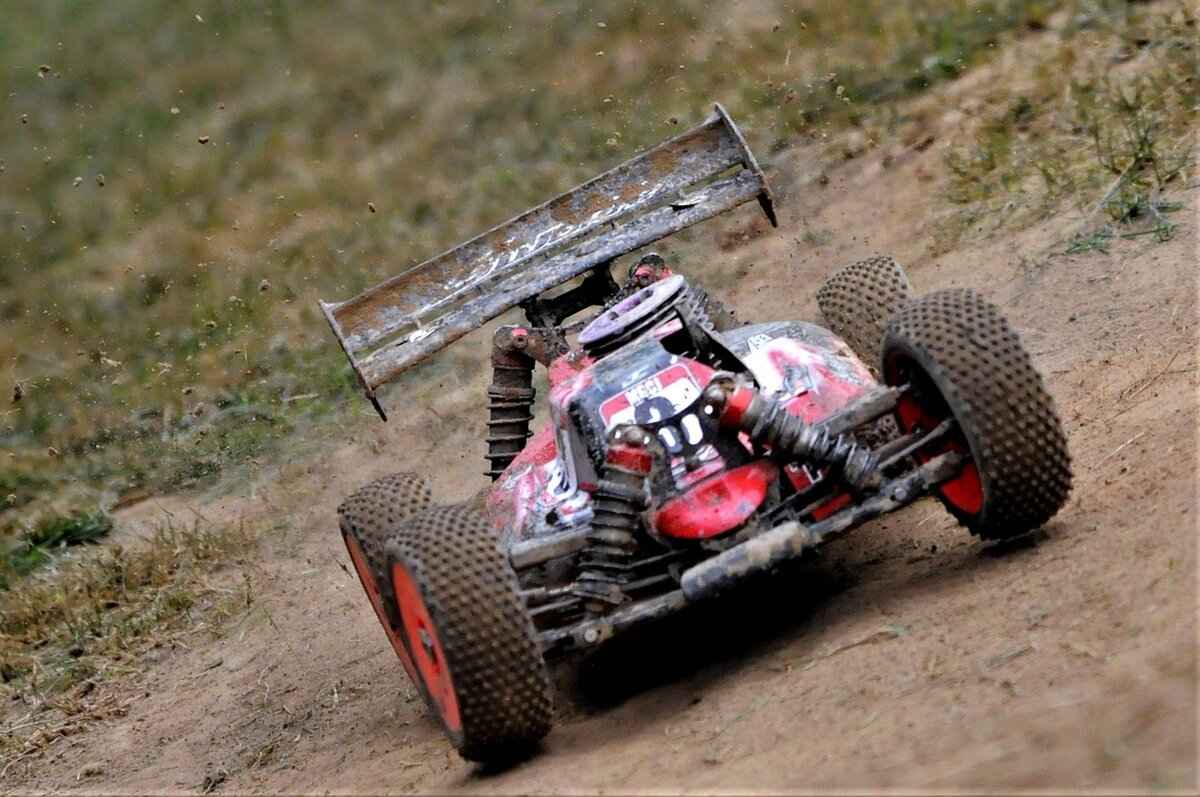
Tuning Suspension for Better Handling
Tuning the suspension of your Redcat RC car is a critical factor in enhancing its overall handling and stability. Proper suspension settings allow for better control, especially when navigating various terrains. In this section, we will explore the importance of suspension tuning, how to adjust shock absorbers, and the impact of these adjustments on your driving experience.
Why is Suspension Tuning Important?
The suspension system is responsible for maintaining contact between your RC car’s tires and the ground. This connection is vital for traction, stability, and overall performance. When you tune your suspension, you are effectively optimizing your car’s ability to absorb shocks and respond to changes in terrain. A well-tuned suspension can lead to improved cornering, reduced body roll, and enhanced comfort during races.
- Enhanced Traction: Properly tuned suspension helps keep the tires in contact with the ground, maximizing grip.
- Improved Stability: A balanced suspension setup minimizes unwanted movements, allowing for smoother handling.
- Adaptability: Adjusting suspension settings enables your RC car to perform well on different surfaces, from asphalt to dirt tracks.
Adjusting Shock Absorbers for Optimal Performance
Shock absorbers play a pivotal role in how your RC car handles bumps and dips on the track. Adjusting them correctly can significantly affect your vehicle’s responsiveness. Here are some key considerations:
- Compression Settings: This setting controls how quickly the shock absorbs bumps. A stiffer compression can enhance control on smooth surfaces, while a softer setting is better for rough terrain.
- Rebound Settings: This determines how quickly the shock returns to its original position after compressing. A faster rebound can help maintain traction during quick maneuvers.
- Preload Adjustments: Adjusting the preload affects the ride height and overall stiffness of the suspension. Increasing preload can raise the car’s height, which can be beneficial for avoiding obstacles.
Testing Your Adjustments
After making adjustments to your suspension, it’s essential to test your RC car to evaluate its performance. Conducting a series of test runs on different terrains will provide valuable feedback on how well your tuning has worked. Pay attention to how the car handles turns, absorbs shocks, and maintains stability.
Common Suspension Tuning Mistakes
While tuning your suspension, it’s easy to make mistakes that can negatively impact performance. Here are a few common pitfalls to avoid:
- Over-Tuning: Making too many adjustments at once can lead to confusion about what works and what doesn’t.
- Ignoring Terrain: Failing to adjust suspension settings based on the track surface can result in poor handling.
- Neglecting Maintenance: Regularly check your suspension components for wear and tear to ensure consistent performance.
By understanding the significance of suspension tuning and implementing the right adjustments, you can significantly enhance your Redcat RC car’s handling and stability. Whether you’re racing on a smooth track or navigating rough terrain, a well-tuned suspension will provide the control and performance you need to excel.
Importance of Suspension Tuning
Tuning the suspension of your Redcat RC car is not just a matter of personal preference; it significantly impacts overall performance. The suspension system is responsible for maintaining tire contact with the ground, absorbing shocks, and providing stability during high-speed maneuvers. This article delves into the importance of suspension tuning, explaining how it affects your car’s performance based on various factors.
Proper suspension tuning can enhance the handling characteristics of your RC car, allowing for better cornering, smoother landings, and improved traction. By adjusting the suspension settings, you can tailor your car’s performance to match track conditions and your driving style. This adaptability is crucial, especially in competitive racing scenarios where every second counts.
Different track surfaces and conditions require specific suspension settings. For instance, a smooth track may allow for stiffer suspension settings, providing better responsiveness. In contrast, a rough or bumpy track necessitates softer settings to absorb shocks and maintain tire contact. Understanding these dynamics can help you make informed decisions when tuning your suspension.
Your driving style also plays a significant role in suspension tuning. Aggressive drivers may prefer a stiffer suspension for sharper handling, while more conservative drivers might opt for a softer setup that offers better comfort and stability. Recognizing your driving habits can guide you in adjusting your suspension for optimal performance.
- Shock Absorbers: Adjusting the damping settings can greatly influence how your car reacts to bumps and jumps.
- Spring Rates: Choosing the right spring rates can affect ride height and weight transfer during acceleration and braking.
- Ride Height: Lowering or raising the ride height can impact the car’s center of gravity and aerodynamics.
After making initial adjustments, it’s essential to test your car under various conditions. Take it to different tracks and observe how it performs. Make incremental changes and keep notes on how each adjustment affects handling and stability. This iterative process will help you achieve the best setup for your specific needs.
In conclusion, suspension tuning is a critical aspect of optimizing your Redcat RC car’s performance. By understanding the impact of track conditions and your driving style, you can make informed adjustments that enhance handling, stability, and overall speed. Whether you’re racing competitively or enjoying leisurely drives, the right suspension setup can make all the difference.
Adjusting Shock Absorbers
is a crucial aspect of tuning your belt-driven Redcat RC car for optimal performance. Properly adjusted shock absorbers enhance the car’s responsiveness and comfort during races, allowing for better handling and control. This section will delve into the importance of shock absorbers, how they function, and the steps to effectively adjust them for improved racing experience.
Shock absorbers, also known as dampers, are integral components of your RC car’s suspension system. They work by controlling the movement of the car’s springs, absorbing shocks from bumps and uneven surfaces. This not only helps in maintaining stability but also ensures that the tires remain in contact with the ground, which is essential for traction and control.
To begin with, it’s important to understand the different types of shock absorbers available for RC cars. The two most common types are oil-filled shocks and spring-loaded shocks. Oil-filled shocks provide better damping and can be adjusted by changing the oil viscosity, while spring-loaded shocks rely on the tension of the springs for support. Depending on your racing style and the type of terrain, you may choose one over the other.
- Assess the Current Setup: Before making any adjustments, assess the current shock absorber setup. Check for leaks, damaged components, or any signs of wear.
- Determine the Desired Stiffness: The stiffness of the shock absorbers affects how the car handles. A stiffer setup is better for smooth tracks, while a softer setup is ideal for rough terrains.
- Adjust the Preload: Adjusting the preload on the springs can change the ride height and stiffness of the shock absorbers. Increasing preload raises the car and makes it stiffer, while decreasing it lowers the car and makes it softer.
- Change the Oil: For oil-filled shocks, changing the oil can drastically affect performance. Thicker oil provides more resistance, while thinner oil allows for quicker movement.
After making adjustments, it’s essential to test the car to see how the changes affect performance. A well-tuned shock absorber setup can significantly improve your lap times and overall handling. Pay attention to how the car reacts during turns and over bumps, and make further adjustments as necessary.
In conclusion, adjusting shock absorbers is a vital part of tuning your Redcat RC car. By understanding their function and making precise adjustments, you can enhance your car’s responsiveness and comfort, leading to a more enjoyable racing experience. Remember to continually assess and adjust your setup based on the conditions of the track and your personal driving style.
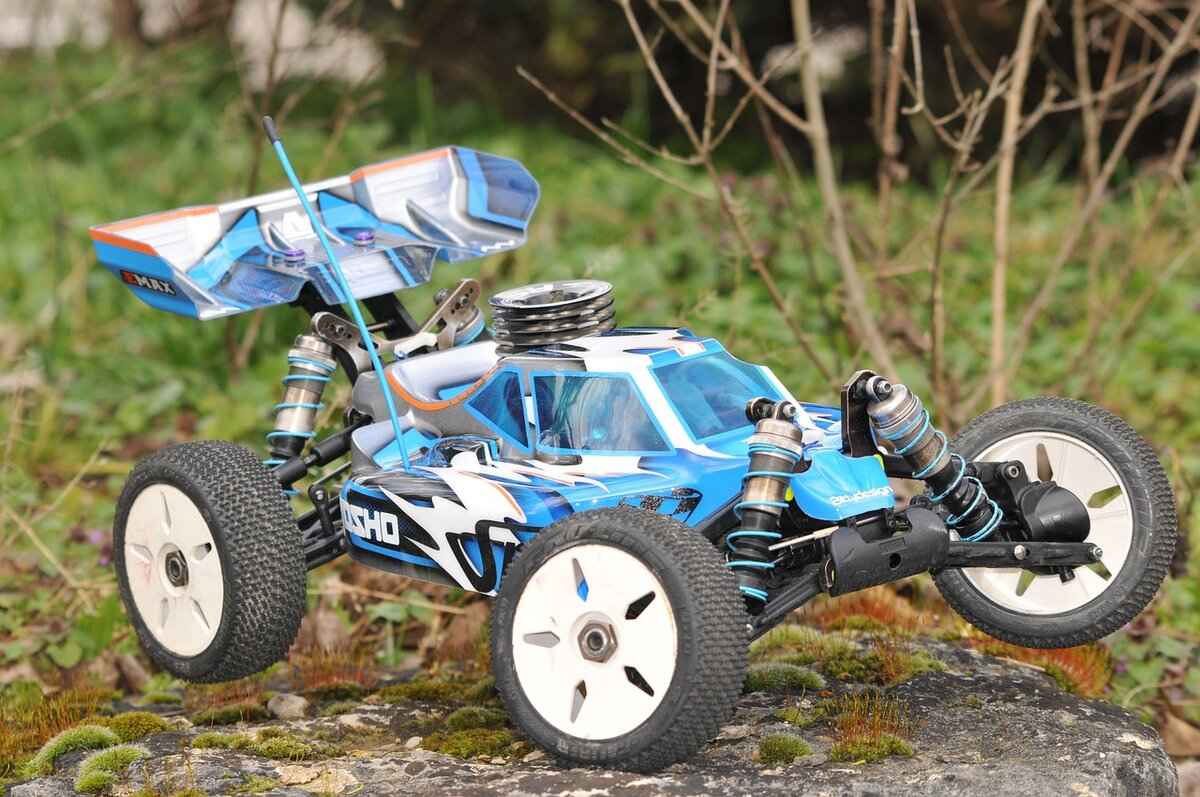
Testing Performance After Adjustments
Testing the performance of your belt-driven Redcat RC car after making adjustments is a crucial step in optimizing its functionality. It ensures that the modifications you implemented have produced the desired effects, helping you achieve better speed, handling, and overall performance. This process involves a systematic approach to evaluating the changes made, allowing you to fine-tune your vehicle for the best racing experience.
Why is Testing Important?
Testing is essential for several reasons. First, it helps you identify whether the adjustments you made are beneficial. For instance, if you adjusted the belt tension or changed the gear ratios, testing will reveal if these changes improved acceleration or top speed. Second, it allows you to spot any potential issues that may have arisen from the modifications, such as unexpected vibrations or handling problems. By conducting thorough tests, you can ensure that your car operates smoothly and efficiently.
Setting Up a Test Track
Creating a test track is a fundamental step in the testing process. A well-designed track should mimic the conditions where you typically race, allowing for a realistic evaluation of your car’s performance. Here are some tips for setting up an effective test track:
- Select a Suitable Location: Choose a flat, open area with minimal obstacles. Grass, dirt, or paved surfaces can be used, depending on your usual racing environment.
- Mark the Track: Use cones or markers to outline the track. Ensure it has straight sections for speed tests and turns for handling evaluations.
- Consider Weather Conditions: Testing in different weather conditions can provide insights into how your car performs under various circumstances.
Conducting Performance Tests
Once your test track is ready, it’s time to conduct performance tests. Here’s a structured approach to ensure comprehensive evaluations:
1. **Initial Run:** Start with a baseline run to gauge your car's current performance without any adjustments. 2. **Test Specific Adjustments:** Focus on one adjustment at a time. For example, if you've adjusted the belt tension, run a series of laps to observe acceleration and speed.3. **Record Data:** Keep a log of your observations, including lap times, handling characteristics, and any anomalies.4. **Compare Results:** After testing all adjustments, compare the results with your baseline run to assess improvements or regressions.
Analyzing Test Results
After completing your tests, analyzing the results is critical. Focus on these key metrics:
- Lap Times: A reduction in lap times indicates successful adjustments.
- Handling and Stability: Evaluate how well your car navigates turns and responds to throttle inputs.
- Temperature Checks: Monitor the temperature of the motor and battery during tests to avoid overheating.
Understanding these metrics will help you determine the effectiveness of your adjustments. If certain modifications did not yield the expected results, consider revisiting those areas for further tuning.
In conclusion, testing the performance of your Redcat RC car after making adjustments is not just a formality; it’s an essential process that allows you to maximize your vehicle’s capabilities. By setting up a proper test track, conducting focused performance tests, and analyzing the results meticulously, you can ensure that your modifications lead to an enhanced racing experience. Remember, every small adjustment can significantly impact your performance on the track.
Setting Up a Test Track
Creating a dedicated test track for your RC car is an essential step in achieving optimal performance. A controlled environment allows you to evaluate various adjustments and modifications systematically. This guide will walk you through the process of setting up an effective test track, ensuring that you can accurately assess your RC car’s capabilities.
- Choosing the Right Location: Select a flat, open area away from traffic and obstacles. A smooth surface, such as asphalt or concrete, is ideal for testing speed and handling.
- Defining the Track Layout: Design a track that includes straightaways, turns, and obstacles. This layout will help you evaluate acceleration, cornering, and braking performance.
- Marking the Track: Use cones, flags, or chalk to outline your track. Clearly marked boundaries help maintain focus during testing and ensure consistency in your runs.
- Setting Up Timing Equipment: Invest in a reliable timing system to measure lap times and speed. This data is crucial for analyzing performance improvements after adjustments.
Once your track is established, it’s essential to conduct a series of test runs. Begin with baseline tests to gather initial performance data. This information will serve as a reference point for future modifications.
- Baseline Testing: Run your RC car multiple times around the track without any modifications. Record lap times and note any handling issues or performance concerns.
- Adjusting Settings: After baseline testing, implement changes such as adjusting gear ratios, suspension settings, or belt tension. Each change should be followed by additional test runs to evaluate its impact.
- Documenting Results: Keep a detailed log of your test runs, including lap times, handling characteristics, and any adjustments made. This documentation will help you track progress and identify effective modifications.
Additionally, consider varying track conditions to assess your RC car’s adaptability. Testing in different weather conditions, such as dry or wet surfaces, can provide insights into handling and performance under diverse scenarios.
In conclusion, setting up a test track is a vital component of optimizing your RC car’s performance. By creating a controlled environment, you can systematically evaluate adjustments, leading to a more enjoyable and competitive racing experience. Remember to take thorough notes and remain patient throughout the testing process, as fine-tuning your RC car requires time and precision.
Analyzing Test Results
When it comes to optimizing the performance of your belt-driven Redcat RC car, is a fundamental step that should not be overlooked. This process allows you to gauge the effectiveness of the adjustments you’ve made and helps you identify areas that may still require fine-tuning. In this section, we will explore the key metrics to focus on during your analysis and provide insights on how to interpret these results for further enhancements.
To effectively analyze the performance of your RC car, it’s essential to focus on several key metrics:
- Speed: Measure the maximum speed achieved after adjustments. This can be done using a radar gun or a speedometer app.
- Acceleration: Time your car from a standstill to a specified speed. This will help you understand how quickly your car can respond.
- Handling: Evaluate how well your car maneuvers through turns. Pay attention to any understeer or oversteer issues.
- Battery Life: Monitor how long your battery lasts during performance tests. This can indicate the efficiency of your car’s setup.
- Temperature: Keep track of the motor and battery temperatures. Overheating can signal problems with your adjustments.
Once you have gathered data on these metrics, the next step is to interpret the results:
- Compare Against Baselines: Look at your previous performance metrics to determine if your adjustments have led to improvements. This comparison will help you evaluate the effectiveness of your changes.
- Identify Patterns: Consistent results across multiple tests can indicate a reliable setup. However, if results vary significantly, it may point to underlying issues that need addressing.
- Adjust Accordingly: Use your findings to make informed decisions on further adjustments. For instance, if your speed increased but handling decreased, consider re-evaluating your suspension settings.
It’s crucial to conduct your tests under consistent conditions. Factors such as weather, track surface, and battery charge can all influence performance. To ensure accurate analysis:
- Choose a Consistent Location: Test on the same track or surface to minimize variations in results.
- Control Environmental Factors: Conduct tests in similar weather conditions to avoid discrepancies caused by temperature or wind.
- Maintain Battery Health: Ensure your battery is fully charged and in good condition before each test.
In conclusion, analyzing test results is an integral part of the tuning process for your belt-driven Redcat RC car. By focusing on key metrics and interpreting your findings thoughtfully, you can continue to refine your setup for optimal performance. Remember, the goal is to achieve a well-balanced combination of speed, handling, and efficiency, ensuring an exhilarating and competitive racing experience.
Frequently Asked Questions
- How often should I check the belt tension on my Redcat RC car?
It’s a good idea to check the belt tension before each race or after significant use. Regular checks can prevent slippage and ensure optimal performance.
- What type of lubricant is best for belt-driven RC cars?
Silicone-based lubricants are often recommended for belt-driven systems. They provide excellent protection and reduce friction, enhancing the overall efficiency of your car.
- How can I tell if my gear ratios need adjusting?
If you notice that your car is either too slow or lacks torque for certain terrains, it might be time to adjust the gear ratios. Pay attention to how your car responds to acceleration and climbing.
- What are the signs that my suspension needs tuning?
If your car feels bouncy, or you’re having trouble maintaining control on turns, it’s likely time to tune your suspension. Proper tuning can drastically improve handling and stability.
- How do I set up a test track for performance evaluation?
Choose a flat, open area where you can set up cones or markers to create a course. This allows for controlled testing of your car’s speed and handling under different conditions.

